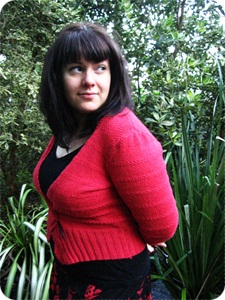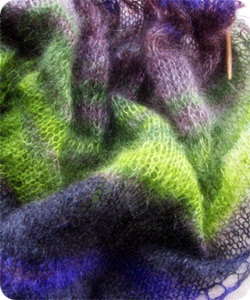You know silly words like "transparency" and "full disclosure"? I believe in them, so you should know this: I did some pattern checking/tech editing, some sample knitting, I am thanked in this book, and I received an advanced copy.
But I am still going to tell you exactly what I think of this book.
You may know that my day job involves meeting lots of knitters and offering technical advice. As part of this day job I get often asked which book I would recommend for beginning knitters. I usually recommend Debbie Stoller's Stitch & Bitch because it gives a beginner information I think is vital: in-depth notes on needles, yarns, and patterns that understand different skill levels. However, S'n'B suffers from three flaws: the pattern styles are outmoded, the yarns used are rarely available to a UK knitter, and once you have graduate from being a beginner to a intermediate knitter, you won't find the book super-useful.
The Knitting Book (KB) ticks the boxes that S'n'B does not do - whilst still delivering the entry-level information that a beginner needs. KB is actually jaw-droppingly all-inclusive. You get a section on tools and materials that explains everything from needles, yarn weights and how to understand a ball band to colour theory, how to use blocking wires, and garment care.
The section on techniques had me reeling. The beginner gets a competent and assuring run-down of how to cast-on and how to do basic stitches. Intermediate knitters get tips on shaping, knitting in the round, and using colour. Advanced knitters? Oh heavens: cast-on methods I had never heard about, two-colour i-cord, ways of knitting backwards, clever buttonholes..
.. can you tell that I'm actually pretty shocked to have encountered a book that combines traditional tried-and-tested methods with trendy Ravelry-style techniques? I am so used to seeing knitting books that essentially just repeat what hundreds of older books say ("there are three ways of casting on, you pick up stitches this way, baby garments are only knitted in baby wool..") that I am honestly taken aback from the sheer knitterly joy and unbridled freedom that I see in KB. This book is clearly written by people who understand there has been a minor earthquake within knitting in the last ten years and who want to combine the sense of everything is possible with the UK's proud knitting heritage.
The pattern section is particularly strong on this point. Intelligently it picks up on techniques previously showcased and delivers accessible designs for knitters of all skill levels. The designers must be used to dealing with knitters on a daily basis because I can see so many of my usual queries being answered: easy accessories (also for men!), gift ideas, and baby items. Want to learn how to do fair isle? There is a small project idea for that! Fancy giving socks a go? Three different patterns are available at increasing difficulty. Every pattern has hints and tips - I wish all patterns came with these little features as they would make my life a tiny bit easier.
I have three patterns that I personally want to try: the cabled wrist warmers (I was just given the perfect yarn for them), the Jelly Fish scarf (which looks super cosy), and the Harlequin scarf which uses Kid Silk Haze in a colour-graduating fashion. Mmmm, Kid Silk Haze..
Are there any drawbacks to KB? Yes, of course there are. It is more expensive than, say, Stitch'n'Bitch. It is not particularly portable and will most likely become a reference book residing on your shelves rather than being dragged with you to knitting group. Some beginners will feel overwhelmed by its wealth of information and run away screaming. I am unsure about the stitch dictionary section: you first see it straight after the tools & materials section, but the actual instructions only appear sections later - this feels a bit random. It is not styled to within an inch of its life nor does it have beautiful people wearing the knitted samples in a stylish home. KB is much more utilitarian than that.
I am trying to be objective here - truly I am - but KB is a cracker. I see and get offered so many knitting books and I rarely come away feeling like I have uncovered a gem. I'm clearly not the only one to feel this way, though, as I have been told this title is already being translated for overseas markets. I am very, very glad to have this as part of my library. It is going right in next to Montse Stanley & I am going to use this for many years to come.


















